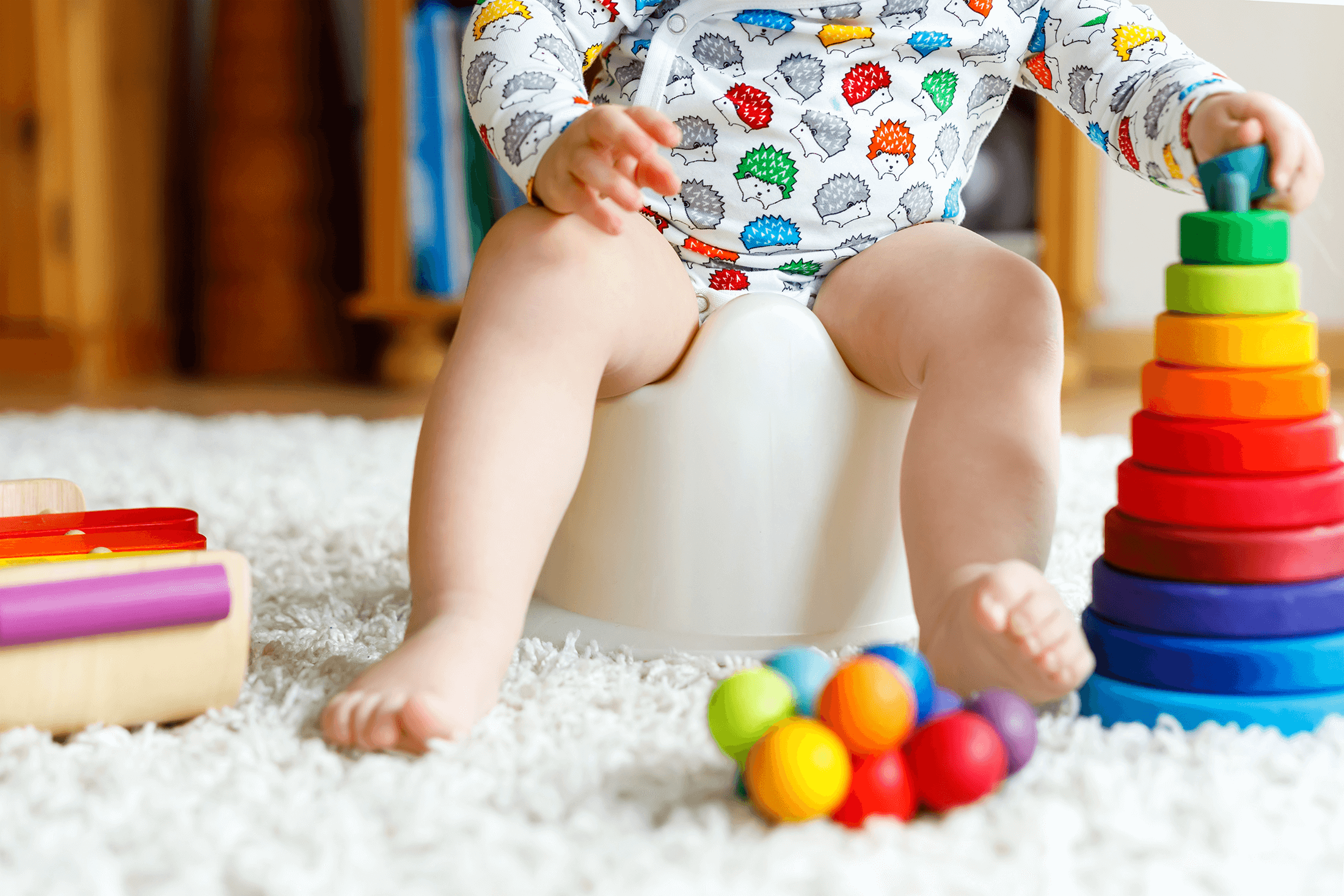Toilet Training
Toileting concerns are common, and it is easy to see why! Toilet training involves introducing a new set of skills to a child.
You are teaching a child to respond to physiological events (i.e., bladder and bowel pressure) inside their body that they have never had to pay attention to before, and you don’t necessarily know when those physiological events are occurring because you can’t see them.
You are expecting them to sit on a toilet and wait for something to happen. For a small child, waiting for even a few minutes can seem like a very long time.
Until the child actually experiences the feeling of relief after having to urinate, holding it, releasing it, and then walking away without having to tolerate a change of diaper or clothing, it may not seem very important to them to use the toilet. In fact, it seems downright hard and not worth the effort.
Toilet training is also stressful for adults. Accidents require time and effort to clean and change. Accidents are often inconvenient, especially when they occur in the car or when you are out and about, far away from a place to change into clean clothing.
So what can we do about this?
Research outlines two general approaches to toilet training: low-intensity and high-intensity. Most children will learn to toilet independently using a low-intensity method.
Low-Intensity Method
Step 1: Gather Your Resources
The low-intensity method depends on having a caregiver around who can be dedicated to training during the training period. That means selecting a long weekend or other time when you or another caregiver can be dedicated to training and not have much else going on.
Decide whether you are going to use a potty chair or the toilet. If you are planning to have your child use the regular toilet, consider purchasing a smaller seat to fit over the toilet as well as a step stool to help them access the toilet and rest their feet while sitting. It is important for children to feel comfortable and safe while sitting on the toilet or potty chair.
Consider the use of books or dolls to model the toileting routine. Within a family, slightly-older, already-trained siblings may also be good models.
Books, treats, and small toys can come in very handy so pick some up to have ready for rewarding success.
Make sure the child has loose-fitting, easy to pull up- and down- clothing.
Step 2: Initiate Training
Begin by explaining to the child what you expect them to do. They should sit on the toilet and wait for urine or feces to come out.
Make sure to also let them know what will happen when they do produce on the toilet. Maybe they will get to sing a song with you, maybe they will get a small candy treat, maybe they will have a “potty party”. Whatever you decide, make sure it is something they can have immediately after they produce on the toilet. That way, they will begin to connect going on the potty with positive and preferred consequences.
Ensure the child is wearing underwear, not a diaper or pull-up. This will make it easier for both them and you to notice when they start to have an accident so you can rush with them to the toilet.
Provide consistent access to fluids, and remind the child to drink if they are not doing so independently. It can be tricky to figure out the right amount of fluid to provide. You don’t want the child to be uncomfortable and drink so much that they have an accident, but you do want to make sure that they are hydrated enough to need to urinate.
Step 3: Be Consistent!
When it is time to train, have the child wearing underwear and loose-fitting clothing. Stay indoors and relatively near a toilet so that, as the child is beginning to recognize the feeling of having “to go”, they will be able to get to a toilet very easily.
Reward each instance of successful production in the toilet! This is one of the most important things you can do. Remember that this is a brand new expectation for a child, and it is important to follow this experience with positive and preferred consequences so that children will be more likely to produce in the toilet again and again to access those consequences.
If there is a time when you cannot consistently take the child to the toilet or you cannot deliver consistent consequences (e.g., you have to go in the car, you want to go to the playground, you have a Zoom meeting, etc.), let the child know that training is “off” for that time period and return them to a diaper.
High-Intensity Method
Although most children will begin to have success within 2-3 days after beginning training, there may be some circumstances in which the low-intensity method is not sufficient. Sometimes this may happen if a child has been exposed to inconsistent toilet training in the past, and sometimes it may happen due to other reasons. The high-intensity method generally requires consultation from a professional Board-Certified Behavior Analyst ® who is competent and experienced in toilet training children. This is because the high-intensity method often involves individualized and specialized protocols as well as data collection and analysis.
A Board-Certified Behavior Analyst (BCBA)® can help caregivers identify and correct any concerns. To find a BCBA near you, consult your pediatrician or local school district. You can also go to www.bacb.com to search for providers. Additionally, you may email abaforkids.org@gmail.com for individualized help with your search.
A Board-Certified Behavior Analyst (BCBA)® can help caregivers identify and correct any concerns. To find a BCBA near you, consult your pediatrician or local school district. You can also go to www.bacb.com to search for providers. Additionally, you may email abaforkids.org@gmail.com for individualized help with your search.
Have a Question?
Please feel free to reach out if you have any questions or want to learn more about Applied Behavior Analysis (ABA).








